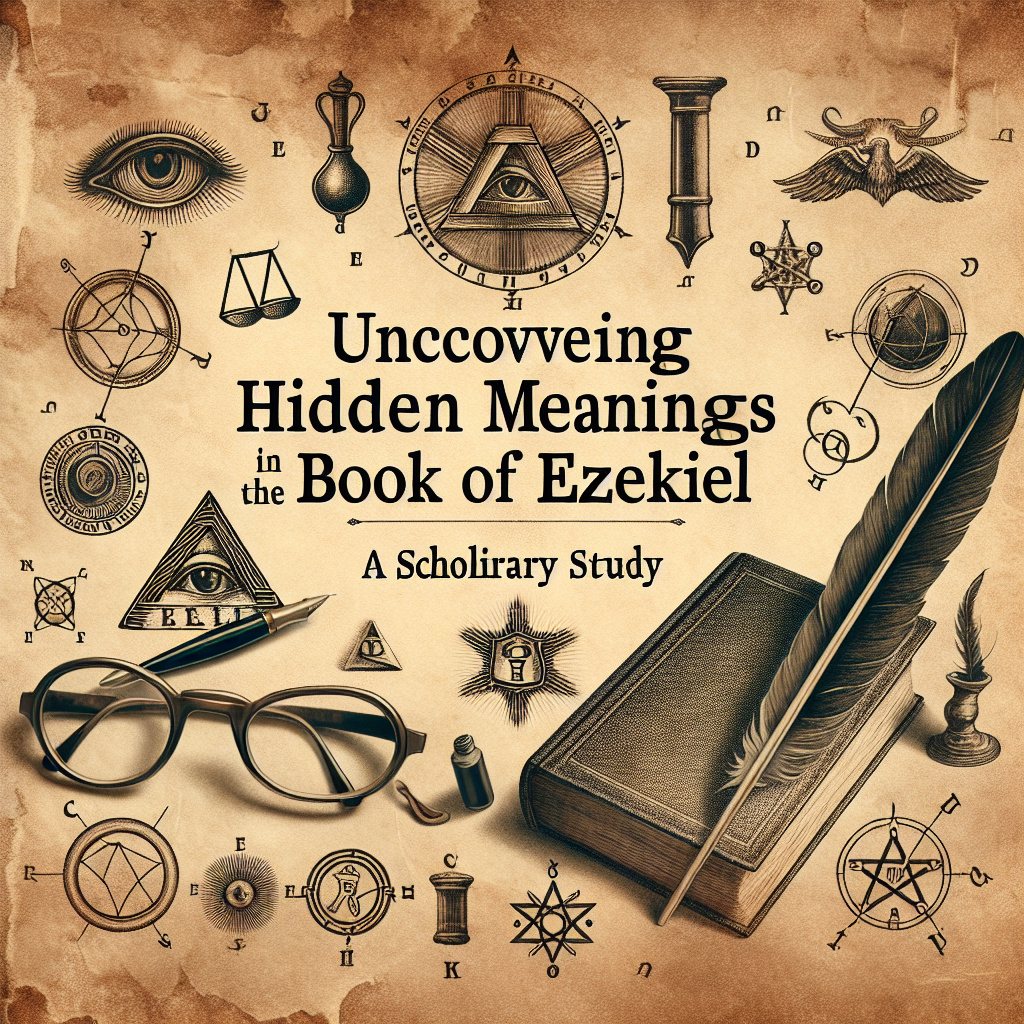The Book of Ezekiel is a complex and enigmatic text that has fascinated scholars and theologians for centuries. In this article, we will explore some of the hidden meanings and symbolic imagery found within the book, and how they shed light on the deeper theological themes that Ezekiel expounds upon.
One of the key themes in the Book of Ezekiel is the symbolic representation of God’s presence and relationship with his people. Throughout the book, God reveals himself to Ezekiel in various visions and manifestations, each of which serves to convey a deeper truth about his nature and his intentions for his people. For example, in the famous vision of the dry bones (Ezekiel 37), God uses the imagery of dead bones being brought back to life as a metaphor for the restoration of Israel after their exile. This vision serves to reinforce the idea that, despite their current state of desolation and despair, God has not forsaken his people and will ultimately bring about their redemption.
Another prominent theme in the Book of Ezekiel is the concept of God’s sovereignty and justice. In many of the visions and prophecies found throughout the book, God is portrayed as a powerful and just ruler who punishes the wicked and rewards the righteous. This theme is exemplified in the vision of the chariot throne (Ezekiel 1), where God is depicted as a majestic and awe-inspiring figure seated on a throne surrounded by heavenly beings. This image serves to underscore the idea that God’s judgment is swift and unyielding, and that those who defy his will are ultimately doomed to destruction.
One of the most intriguing aspects of the Book of Ezekiel is its use of symbolic language and imagery to convey its message. Throughout the book, Ezekiel employs a wide range of metaphorical language and vivid imagery to communicate his prophecies and visions. For example, in the vision of the temple and the glory of God (Ezekiel 40-48), Ezekiel describes in great detail the layout and dimensions of a new temple that will be built in Jerusalem. This temple serves as a symbol of God’s presence and his renewed covenant with his people, and its construction represents the restoration of Israel to its former glory.
In conclusion, the Book of Ezekiel is a rich and complex text that contains many hidden meanings and symbolic imagery. Through its use of metaphor and allegory, the book conveys profound theological truths about God’s nature, his relationship with his people, and his ultimate plan for redemption. By delving deeper into the text and uncovering these hidden meanings, scholars can gain a deeper understanding of the theological and spiritual themes that Ezekiel seeks to convey.


